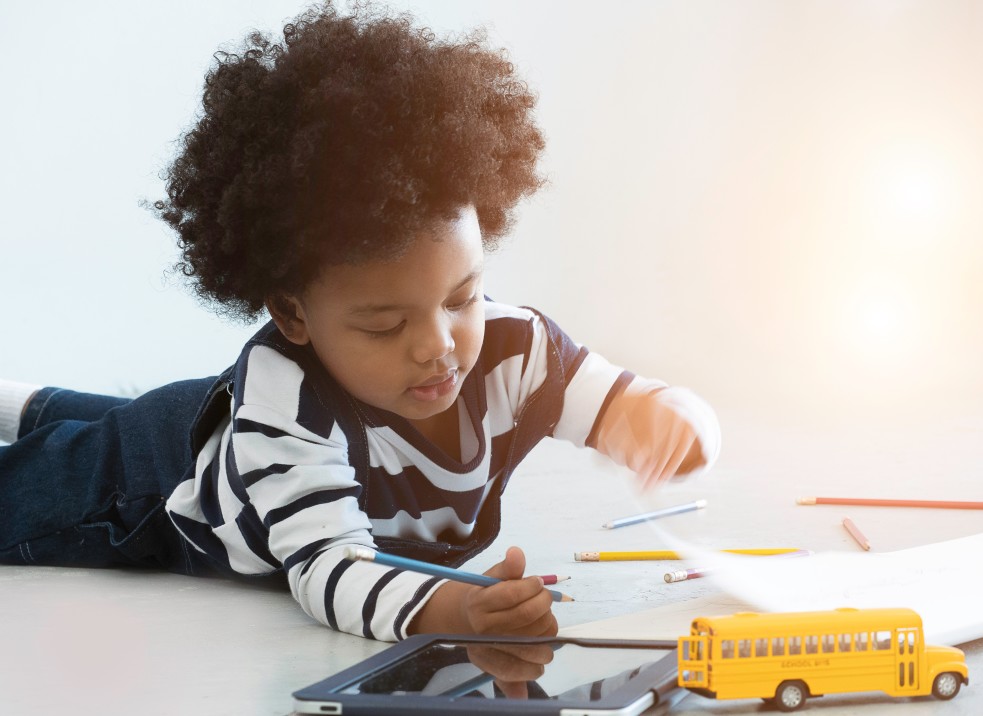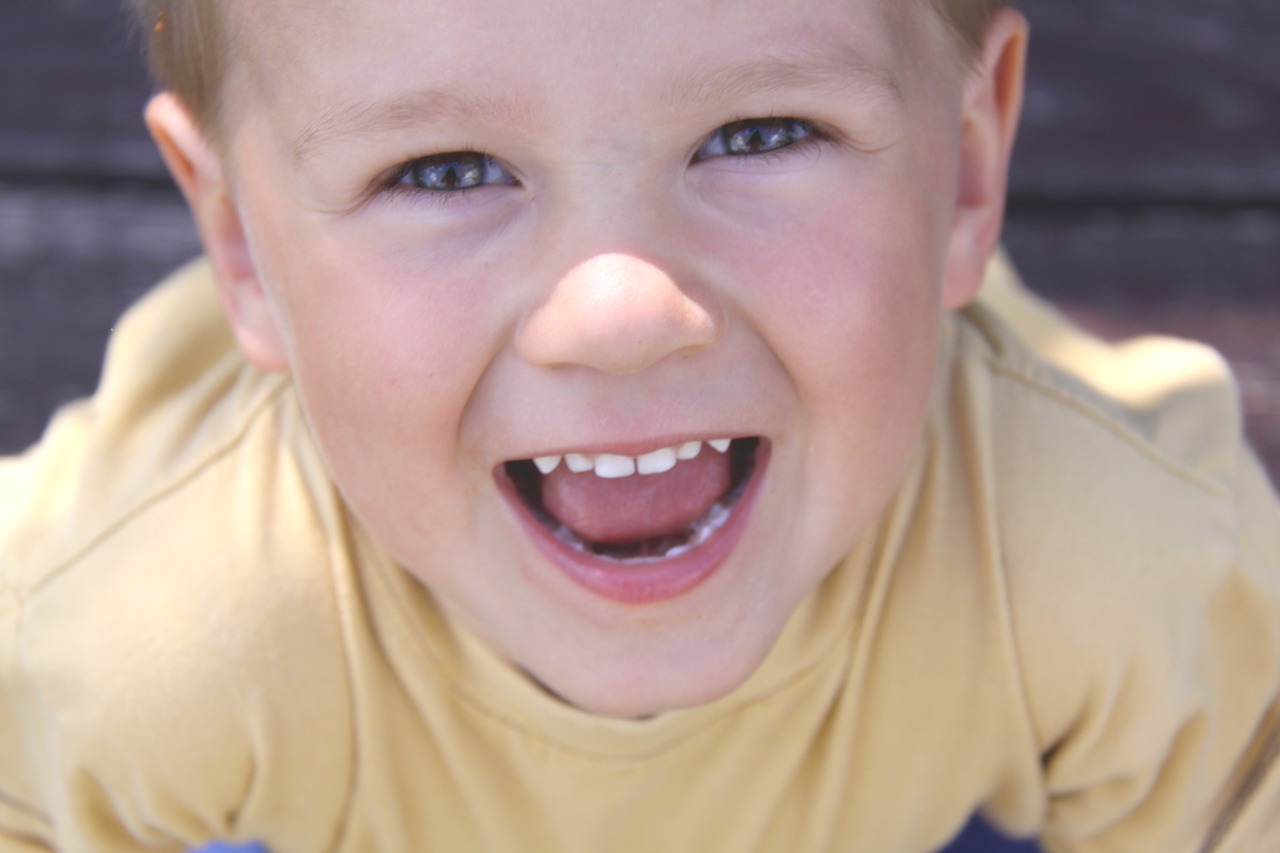The first 3 years of life, when the brain is developing and maturing, is the most intensive period for acquiring speech and language skills. These skills develop best in a world that is rich with sounds, sights, and consistent exposure to the speech and language of others.
How do speech and language develop?
There appear to be critical periods for speech and language development in infants and young children when the brain is best able to absorb language. If these critical periods are allowed to pass without exposure to language, it will be more difficult to learn.
What are the milestones for speech and language development?
The first signs of communication occur when an infant learns that a cry will bring food, comfort, and companionship. Newborns also begin to recognize important sounds in their environment, such as the voice of their mother or primary caretaker. As they grow, babies begin to sort out the speech sounds that compose the words of their language. By 6 months of age, most babies recognize the basic sounds of their native language.
Children vary in their development of speech and language skills. However, they follow a natural progression or timetable for mastering the skills of language. A checklist of milestones for the normal development of speech and language skills in children from birth to 5 years of age is included below. These milestones help doctors and other health professionals determine if a child is on track or if he or she may need extra help. Sometimes a delay may be caused by hearing loss, while other times it may be due to a speech or language disorder.
What is the difference between a speech disorder and a language disorder?
Children who have trouble understanding what others say (receptive language) or difficulty sharing their thoughts (expressive language) may have a language disorder. Specific language impairment (SLI) is a language disorder that delays the mastery of language skills. Some children with SLI may not begin to talk until their third or fourth year.
Children who have trouble producing speech sounds correctly or who hesitate or stutter when talking may have a speech disorder. Apraxia of speech is a speech disorder that makes it difficult to put sounds and syllables together in the correct order to form words.
What should I do if my child’s speech or language appears to be delayed?
Talk to your child’s doctor if you have any concerns. Your doctor may refer you to a speech-language pathologist, who is a health professional trained to evaluate and treat people with speech or language disorders. The speech-language pathologist will talk to you about your child’s communication and general development. He or she will also use special spoken tests to evaluate your child. A hearing test is often included in the evaluation because a hearing problem can affect speech and language development. Depending on the result of the evaluation, the speech-language pathologist may suggest activities you can do at home to stimulate your child’s development. They might also recommend group or individual therapy or suggest further evaluation by an audiologist (a health care professional trained to identify and measure hearing loss), or a developmental psychologist (a health care professional with special expertise in the psychological development of infants and children).
What research is being conducted on developmental speech and language problems?
The National Institute on Deafness and Other Communication Disorders (NIDCD) sponsors a broad range of research to better understand the development of speech and language disorders, improve diagnostic capabilities, and fine-tune more effective treatments. An ongoing area of study is the search for better ways to diagnose and differentiate among the various types of speech delay. A large study following approximately 4,000 children is gathering data as the children grow to establish reliable signs and symptoms for specific speech disorders, which can then be used to develop accurate diagnostic tests. Additional genetic studies are looking for matches between different genetic variations and specific speech deficits.
Researchers sponsored by the NIDCD have discovered one genetic variant, in particular, that is linked to specific language impairment (SLI), a disorder that delays children’s use of words and slows their mastery of language skills throughout their school years. The finding is the first to tie the presence of a distinct genetic mutation to any kind of inherited language impairment. Further research is exploring the role this genetic variant may also play in dyslexia, autism, and speech-sound disorders.
A long-term study looking at how deafness impacts the brain is exploring how the brain “rewires” itself to accommodate deafness. So far, the research has shown that adults who are deaf react faster and more accurately than hearing adults when they observe objects in motion. This ongoing research continues to explore the concept of “brain plasticity”—the ways in which the brain is influenced by health conditions or life experiences—and how it can be used to develop learning strategies that encourage healthy language and speech development in early childhood.
A recent workshop convened by the NIDCD drew together a group of experts to explore issues related to a subgroup of children with autism spectrum disorders who do not have functional verbal language by the age of 5. Because these children are so different from one another, with no set of defining characteristics or patterns of cognitive strengths or weaknesses, development of standard assessment tests or effective treatments has been difficult. The workshop featured a series of presentations to familiarize participants with the challenges facing these children and helped them to identify a number of research gaps and opportunities that could be addressed in future research studies.
What are voice, speech, and language?
Voice, speech, and language are the tools we use to communicate with each other.
Voice is the sound we make as air from our lungs is pushed between vocal folds in our larynx, causing them to vibrate.
Speech is talking, which is one way to express language. It involves the precisely coordinated muscle actions of the tongue, lips, jaw, and vocal tract to produce the recognizable sounds that make up language.
Language is a set of shared rules that allow people to express their ideas in a meaningful way. Language may be expressed verbally or by writing, signing, or making other gestures, such as eye blinking or mouth movements.
Hearing and Communicative Development Checklist from Birth to Age 5
Birth to 3 Months
Reacts to loud sounds
Calms down or smiles when spoken to
Recognizes your voice and calms down if crying
When feeding, starts or stops sucking in response to sound
Coos and makes pleasure sounds
Has a special way of crying for different needs
Smiles when he or she sees you
4 to 6 Months
Follows sounds with his or her eyes
Responds to changes in the tone of your voice
Notices toys that make sounds
Pays attention to music
Babbles in a speech-like way and uses many different sounds, including sounds that begin with p, b, and m
Laughs
Babbles when excited or unhappy
Makes gurgling sounds when alone or playing with you
7 Months to 1 Year
Enjoys playing peek-a-boo and pat-a-cake
Turns and looks in the direction of sounds
Listens when spoken to
Understands words for common items such as “cup,” “shoe,” or “juice”
Responds to requests (“Come here”)
Babbles using long and short groups of sounds (“tata, upup, bibibi”)
Babbles to get and keep attention
Communicates using gestures such as waving or holding up arms
Imitates different speech sounds
Has one or two words (“Hi,” “dog,” “Dada,” or “Mama”) by first birthday
1 to 2 Years
Knows a few parts of the body and can point to them when asked
Follows simple commands (“Roll the ball”) and understands simple questions (“Where’s your shoe?”)
Enjoys simple stories, songs, and rhymes
Points to pictures, when named, in books
Acquires new words on a regular basis
Uses some one- or two-word questions (“Where kitty?” or “Go bye-bye?”)
Puts two words together (“More cookie”)
Uses many different consonant sounds at the beginning of words
2 to 3 Years
Has a word for almost everything
Uses two- or three-word phrases to talk about and ask for things
Uses k, g, f, t, d, and n sounds
Speaks in a way that is understood by family members and friends
Names objects to ask for them or to direct attention to them
3 to 4 Years
Hears you when you call from another room
Hears the television or radio at the same sound level as other family members
Answers simple “Who?” “What?” “Where?” and “Why?” questions
Talks about activities at daycare, preschool, or friends’ homes
Uses sentences with four or more words
Speaks easily without having to repeat syllables or words
4 to 5 Years
Pays attention to a short story and answers simple questions about it
Hears and understands most of what is said at home and in school
Uses sentences that give many details
Tells stories that stay on topic
Communicates easily with other children and adults
Says most sounds correctly except for a few (l, s, r, v, z, ch, sh, and th)
Uses rhyming words
Names some letters and numbers
Uses adult grammar
This checklist is based upon How Does Your Child Hear and Talk?, courtesy of the American Speech–Language–Hearing Association.
Where can I find additional information about speech and language developmental milestones?
The NIDCD maintains a directory of organizations that provide information on the normal and disordered processes of hearing, balance, taste, smell, voice, speech, and language.
Source: US Department of Health and Human Services, National Institutes of Health | Speech and Language Developmental Milestones, https://www.nidcd.nih.gov/health/speech-and-language#3 | public domain, Last updated March 6, 2017
Do you have concerns about your child’s speech and language development? To schedule an evaluation or to get advice about your child’s challenges, call or email a CHC Care Coordinator at 650.688.3625 or careteam@stage.chconline.org






